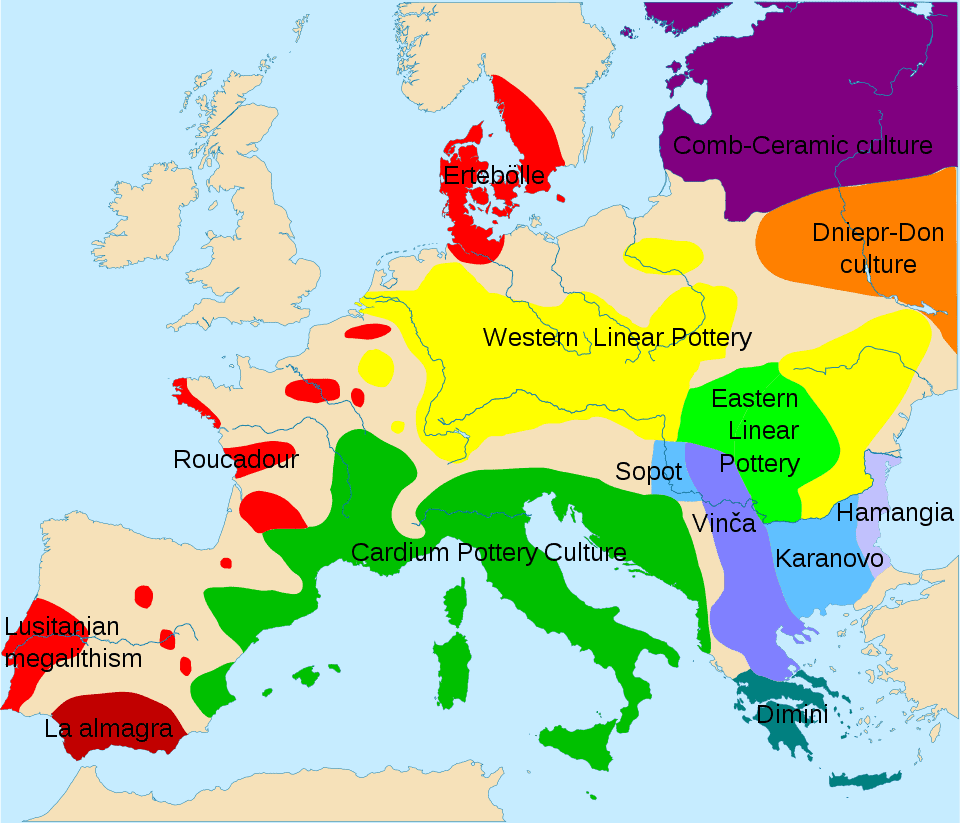
Ertebølle culture
The Ertebølle culture (ca 5300 BC – 3950 BC) is the name of a hunter-gatherer and fisher, pottery-making culture dating to the end of the Mesolithic period. The culture was concentrated in Southern Scandinavia, but genetically linked to strongly related cultures in Northern Germany and the Northern Netherlands. It is named after the type site, a location in the small village of Ertebølle on Limfjorden in Danish Jutland. In the 1890s, the National Museum of Denmark excavated heaps of oyster shells there, mixed with mussels, snails, bones and bone, antler and flint artifacts, which were evaluated as kitchen middens (Danish køkkenmødding), or refuse dumps. Accordingly, the culture is less commonly named the Kitchen Midden. As it is approximately identical to the Ellerbek culture of Schleswig-Holstein, the combined name, Ertebølle-Ellerbek is often used. The Ellerbek culture (German Ellerbek Kultur) is named after a type site in Ellerbek, a community on the edge of Kiel, Germany.
In the 1960s and 1970s another closely related culture was found in the (now dry) Noordoostpolder in the Netherlands, near the village Swifterbant and the former island of Urk. Named the Swifterbant culture (5300 – 3400 BC) they show a transition from hunter-gatherer to both animal husbandry, primarily cows and pigs, and cultivation of barley and emmer wheat. During the formative stages contact with nearby Linear Pottery culture settlements in Limburg has been detected. Like the Ertebølle culture, they lived near open water, in this case creeks, riverdunes and bogs along post-glacial banks of the Overijsselse Vecht.
Read More About Ertebølle culture
